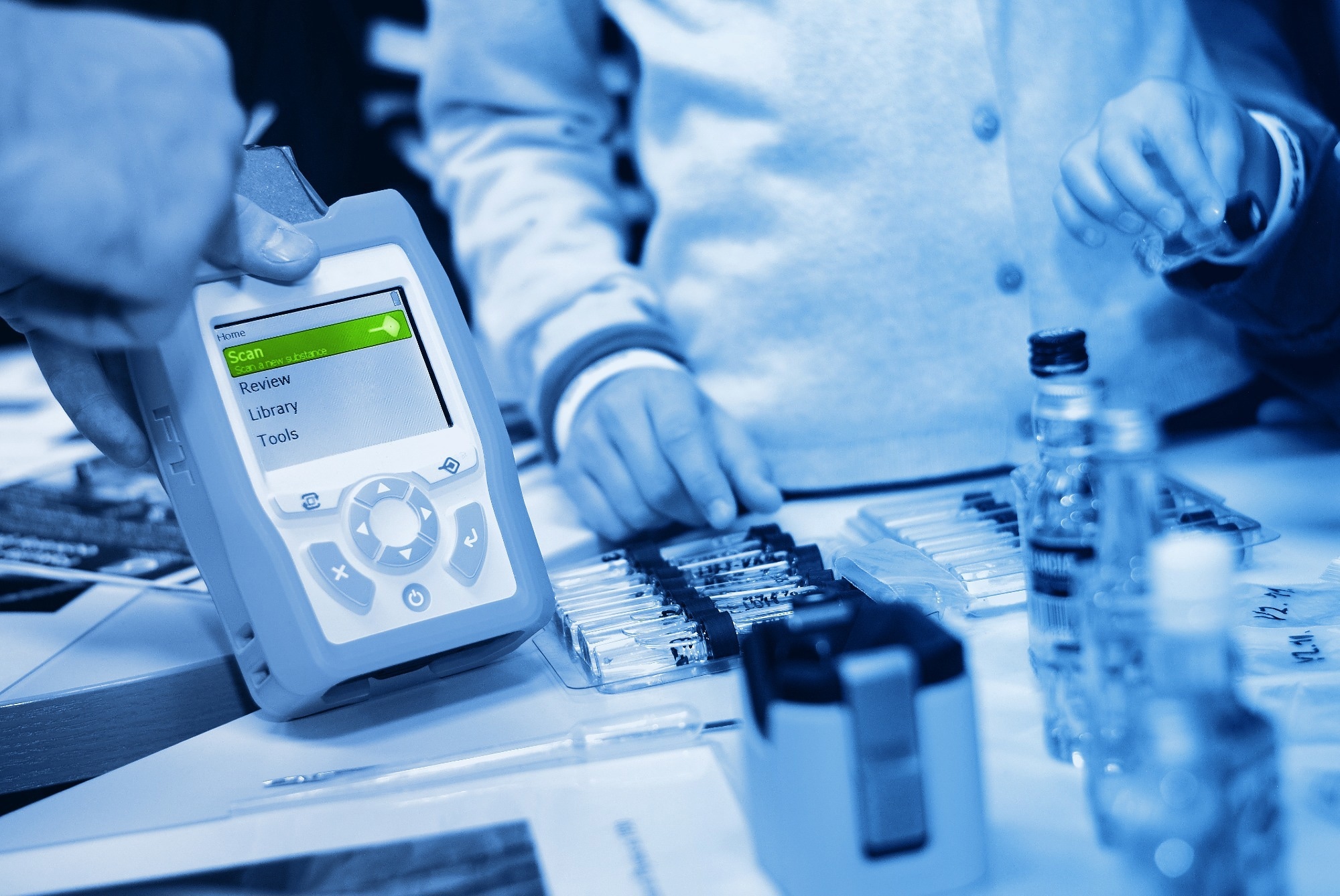For a patient with sepsis, an infection in the blood, the chance of survival decreases by 7-10 % every hour, making it critical to quickly identify the bacteria present and determine which antibiotics might be effective.
Typically, blood contains very few bacteria, making quick detection challenging. The process of culturing bacteria from a sample can take 12-24 hours, after which drug susceptibility testing is required. Accelerating this process could significantly save lives by enabling faster, more targeted treatment for sepsis.

Image Credit: Forance/Shutterstock.com
In this episode, Jen Dionne explains how she and her collaborators at Stanford are using Raman spectroscopy to work on this very problem. By integrating nanophotonics, acoustic bioprinting, and machine learning, they are developing methods to quickly and sensitively identify bacteria and screen for antibiotic susceptibility.
What is Raman Spectroscopy?
Raman spectroscopy is fundamentally, at its core, inelastic photon scattering. Imagine using a laser or another monochromatic light source and shining it onto a sample, such as a bacterial cell. The molecular vibrations within that sample either add to or subtract from the energy of the laser source.
The result is a fingerprint or a sequence of scattered wavelengths that differ from the incident wavelength. With that spectrum, it is possible to identify the elements present in the sample.
Raman spectra of complex mixtures are rendered as a wavy line, like an oscillating jump rope, as opposed to the distinct peaks that you would observe in a pure sample of a small molecule.
Here is what you need to know:
- Raman spectroscopy can be performed on whole cells. By using thousands of bacterial samples to train machine learning models, Raman can recognize different bacterial species and identify which ones are resistant to specific antibiotics.
- Raman spectroscopy is typically not very sensitive, but its efficiency increases with the fourth power of the electric field strength. Surface Enhanced Raman Spectroscopy (SERS), which employs nanoparticles made of superconducting materials, can focus light energy into a very small region without heating and destroying the sample, significantly boosting sensitivity. This enhanced sensitivity facilitates the collection of more data, resulting in better resolution and greater specificity.
- Spectra can be acquired in flight as droplets of blood, for example. These are subsequently acoustically ejected at kilohertz frequencies and transferred to a substrate. The identification of bacteria by the spectra can be verified by electron microscopy of the drops on the substrate.
While the swift diagnosis of sepsis is one possible application, Raman spectroscopy makes it possible to analyze various environmental samples and wastewater samples.
With a fairly large data set of samples, machine learning algorithms have the capacity to identify the subtle features that a human being might otherwise miss. Incorporating additional data through nanophotonics expands the scope of possibilities for addressing larger and more complex problems.
About Life Science Marketing Radio
Life Science Marketing Radio is connecting life science professionals with the brightest minds and best thinking in the industry to grow their network and advance their careers.
Stay on top of new technologies around life science and embark on a journey to learn as much as possible on artificial intelligence, machine learning, and more.
Sponsored Content Policy: News-Medical.net publishes articles and related content that may be derived from sources where we have existing commercial relationships, provided such content adds value to the core editorial ethos of News-Medical.Net which is to educate and inform site visitors interested in medical research, science, medical devices and treatments.